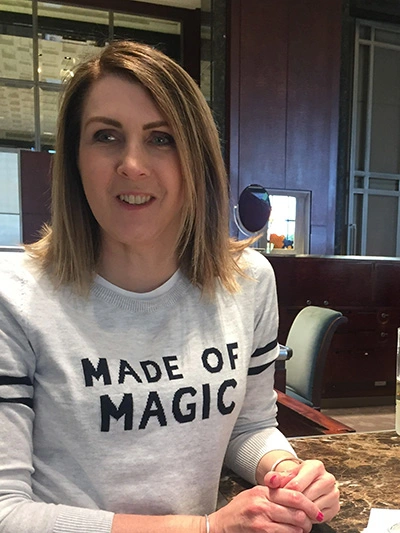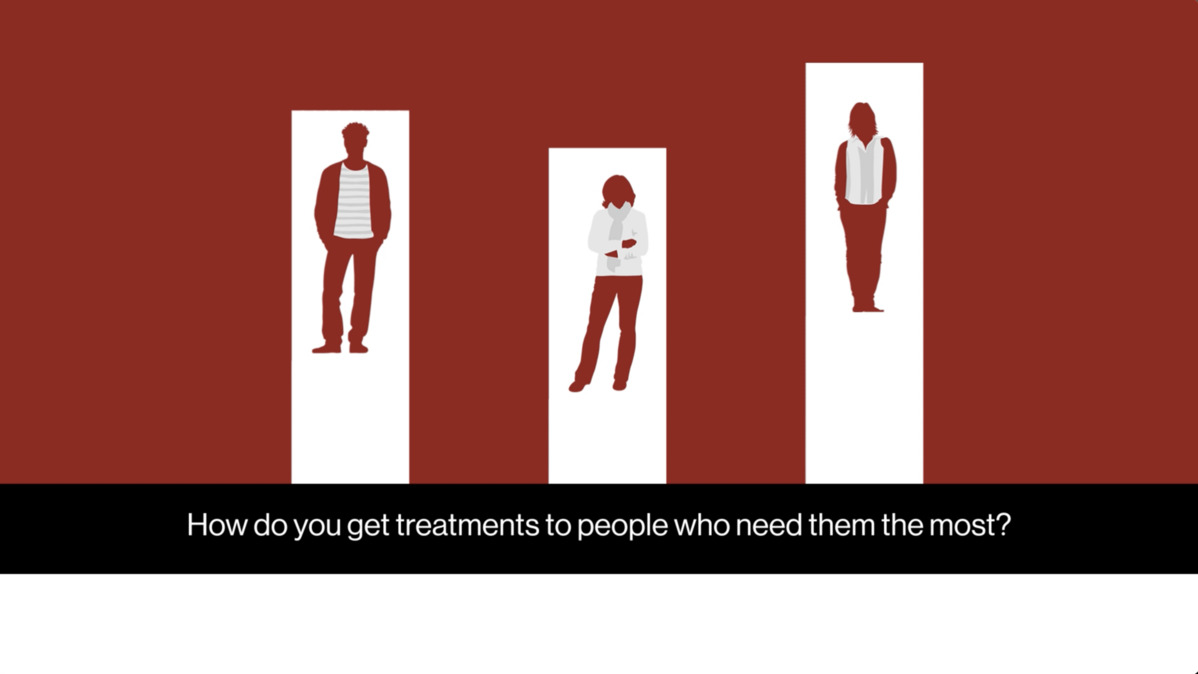Reimagining medicine to transform the treatment of blood cancers and serious blood disorders
Hematology encompasses both malignant cancers and non-malignant disorders of the blood and blood components, such as blood cells and bone marrow cells. There are many different causes of these cancers and disorders, and prognosis can vary significantly among the different illnesses.
Because we know how challenging—and sometimes devastating—these diagnoses can be, Novartis is deeply committed to transforming the lives of people living with blood cancers and life-threatening blood disorders. We believe that anyone with these conditions has the right to live a life free from symptoms and disease—this is our vision that leads us into the future.
To address unmet needs in hematology, we remain on the cutting edge of research to tackle the underlying causes of quickly developing acute illnesses, as well as slowly progressing chronic conditions that require long-term management—from leukemias and lymphomas to paroxysmal nocturnal hemoglobinuria and sickle cell disease. By investigating therapies with transformative potential, we aim to advance the standard of care for patients with blood cancers and disorders.
Pioneering Therapies in Hematology
Our ongoing commitment to unmet needs in CML
For over two decades, we have pioneered innovative treatment approaches for patients with chronic myeloid leukemia (CML).
In 2001, Novartis received approval from the US Food and Drug Administration (FDA) for the first targeted therapy for cancer, known as a tyrosine kinase inhibitor (TKI) for the treatment of CML. This approval served as proof-of-principle and continues to open doors for more research and development of targeted therapies in oncology and other therapeutic areas.
For CML, this milestone approval helped evolve treatment goals for this disease. In the mid-1970s, the estimated five-year survival rate for patients with CML was only 22%.1 Today, the five-year survival rate is estimated above 70%.1
Despite the progress that has been achieved in the past 20 years with TKIs, there is still a lot to be done to help the CML community.
Significant unmet needs remain—particularly for patients in later lines of CML who have experienced resistance or intolerance to available treatments. Many of these patients can be at risk of disease progression either because their CML becomes resistant to treatment or because unmanageable side effects make it hard to adhere to treatment.2-6
One breakthrough is not enough. That’s why we won’t stop exploring targeted therapies and new ways of managing the disease with the goal of transforming the lives of patients with CML.

[T]here is a lot of hope and we're so fortunate to have the researchers do what they have done for us, and continue to do, for this disease.
Lisa, a patient living with CML
Bold science to investigate unmet needs in PNH
An estimated 10-20 people per million worldwide live with paroxysmal nocturnal hemoglobinuria (PNH)—a rare, chronic, and serious complement-mediated blood disorder.7
In PNH, red blood cells break apart, a process known as ‘hemolysis’. This is caused by a random, acquired (ie, not inherited) gene mutation, where the body makes abnormal red blood cells that are more vulnerable to be attacked by the complement system.7 PNH is characterized by destruction of red blood cells circulating in blood vessels (intravascular hemolysis [IVH]) and in the liver and spleen (extravascular hemolysis [EVH]), formation of blood clots (known as thrombosis) and impaired bone marrow function. This may result in anemia, where a person has too few healthy red blood cells able to carry oxygen around the body, leading to fatigue and other symptoms.7,8
Despite the available therapy options, around 40% of people with PNH remain anemic, around 80% remain fatigued, and around 30% remain dependent on blood transfusions.7-11 These burdens can negatively impact the quality of life of those living with the disease and their families.8
We remain committed to researching innovative treatment options in hematology with a goal to transform the lives of people living with complement-mediated disease, including PNH.
Learn more about PNH here.
Working to help ensure those who may need our therapies can get them
At Novartis, we know that developing innovative treatments is vital for patients with blood cancers and serious blood disorders, but it is only part of the equation.
We are striving to tackle barriers to access and promote health equity in hematology through our three key access principles: research and development, affordability, and the strengthening of health care systems.
We understand that information is key to supporting patients and helping them feel empowered in their care. By providing educational resources, our goal is to help patients make informed decisions about their diagnosis. We aim to connect people with stories that may resonate with them, making education about serious blood disorders not only informational and accessible, but also relatable and authentic.
These efforts aren’t just intended to help today—but to prepare for the innovation that is coming tomorrow. Through bold science and bold approaches, we will keep taking every action possible to ensure patients get the medicines they need.
 VIDEO
VIDEO